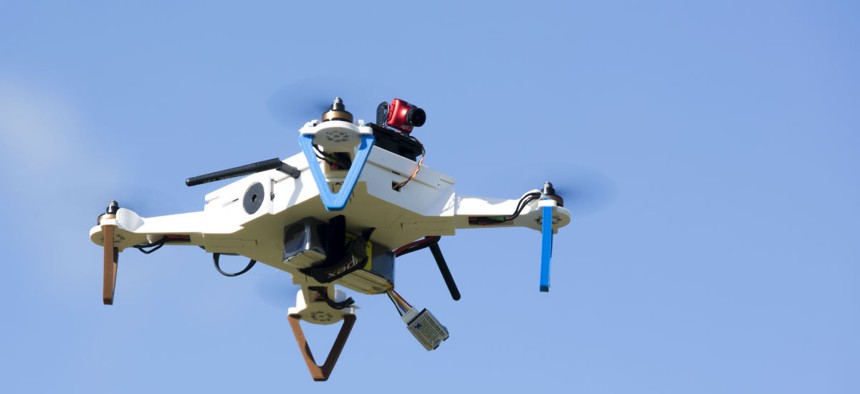DIU is Helping the Army Put More Backpack-Sized Drones in the Battlefield

John A. Hamilton Jr./Marines
The Pentagon’s internal startup accelerator wants to get consumer quadcopters in the hands of soldiers in a matter of months, not years.
The Army is partnering with the Pentagon’s internal startup accelerator to adapt small commercial drones—think hobbyists’ quadcopters—for the battlefield.
The Defense Innovation Unit on Monday announced it will begin offering its expertise to the Army’s Short Range Reconnaissance program. Under the initiative, the Army plans to work with commercial drone companies to build small, inexpensive aircraft that troops in the field could use to survey their surroundings.
As the main intermediary between the Defense Department and the startup community, DIU is uniquely positioned to help vendors that haven’t previously done business with government navigate the federal procurement process. For most vendors participating in the Short Range Reconnaissance program, this is their first military contract, officials said in the announcement.
“Engaging with industry in a more collaborative environment allows the Army to design, develop and deliver the latest technologies to benefit the soldier today as well as better inform how to address identified capability gaps tomorrow,” Carson Wakefield, the assistant product manager for PEO Aviation’s small UAS, said in a statement.
The drones would run largely on open source software, and by the end of the process, they’d be expected to fly for 30 minutes straight at a range of up to three kilometers, according to the original solicitation. Officials specified the aircraft should weigh three pounds or less, take less than 2 minutes to assemble and fit inside a soldier’s standard-issue rucksack.
According to the announcement, selected vendors will rapidly prototype and test their quadcopters with the goal of deploying the tech in the field “within months, not years.”
Thus far, the Army has awarded six contracts under the program worth a combined $11 million, a DIU spokesperson told Nextgov. Companies are largely using the funds to improve their drones’ ability to detect people and vehicles in various conditions.






